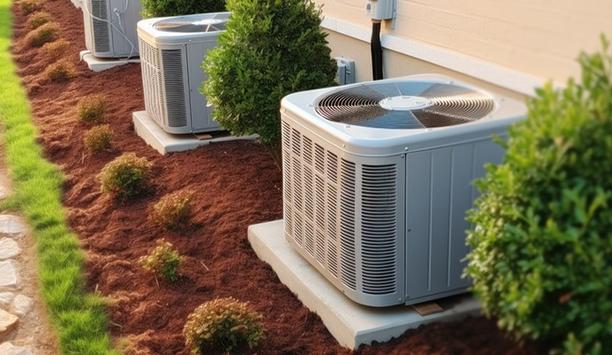Refrigerants used in cooling systems for homes and businesses are being replaced with alternatives that have less potential for global warming. But the transition comes at a risk: Some of the new refrigerants are flammable.
Although less flammable than gases such as propane, for example, new refrigerants can still ignite and burn with a high intensity under ideal circumstances. The new materials have low-flame velocity and are less easily ignited; however, one byproduct of combustion is toxic hydrogen fluoride.
Flammability risks of non-toxic refrigerants
Non-toxic refrigerants are categorized by flammability risks. A1 designates no flame propagation; A2 indicates lower flammability; and A3 indicates higher flammability. Hydrocarbons such as propane have higher flammability (A3) and are restricted to a lower charge limit that does not address refrigeration needs of large systems. Hydrofluoroolefins (HFOs) are mildly flammable, have a low flammability limit (LFL) and have been categorized as an A2L refrigerant. They tend to burn slowly and give off little heat.
Hydrocarbons such as propane have higher flammability
NFPA (National Fire Protection Association) offers online and instructor-led training to educate firefighters about flammability and toxicity risks associated with new refrigerants. The training also covers asphyxiation challenges, jet stream fires, transportation issues and other life-safety considerations associated with flammable refrigerants.
The training covers how to adapt response tactics to mitigate consequences from refrigerants in various types of emergencies. Strict adherence to standard operating procedures (SOPs), personal protective equipment (PPE) and self-contained breathing apparatus (SCBA) protocols and decontamination practices are also covered.
Categorising refrigerant flammability
The Federal Emergency Management Association (FEMA) provides funding to NFPA to develop training on the emerging technology.
According to an ASHRAE report, refrigerant flammability can be characterized by three factors:
- Likelihood that a refrigerant leak would result in a concentration range that reaches the lower flammability limit;
- Presence of a sufficient energy ignition source; and
- Likely severity of a combustion event, and probability of a secondary fire.
ASHRAE is the American Society of Heating, Refrigerating and Air-Conditioning Engineers.
The Air-Conditioning, Heating and Refrigeration Technology Institute (AHRTI) and the U.S. Department of Energy (DoE) are researching the flammability of refrigerants, including factors such as refrigerant charge size, release height, leak rate, humidity, and room size and temperature. When choosing the best refrigerants, it is likely a tradeoff will be required among global warming potential, flammability and efficiency.
Codes and standards
Codes and standards are being modified to address the use of new materials
Currently, codes and standards are being modified to address the use of new materials, although risk mitigation concerns of the fire service have historically not been considered. One issue is the risk of using large amounts of flammable gas in a refrigeration system to cool a larger room. Additional safety measures are needed to make the risk acceptable.
Detection of leaks is another issue, especially the need for repeated calibration of leak detectors to ensure accuracy.
More than 200 countries will be ushering in the new class of refrigerants.







































